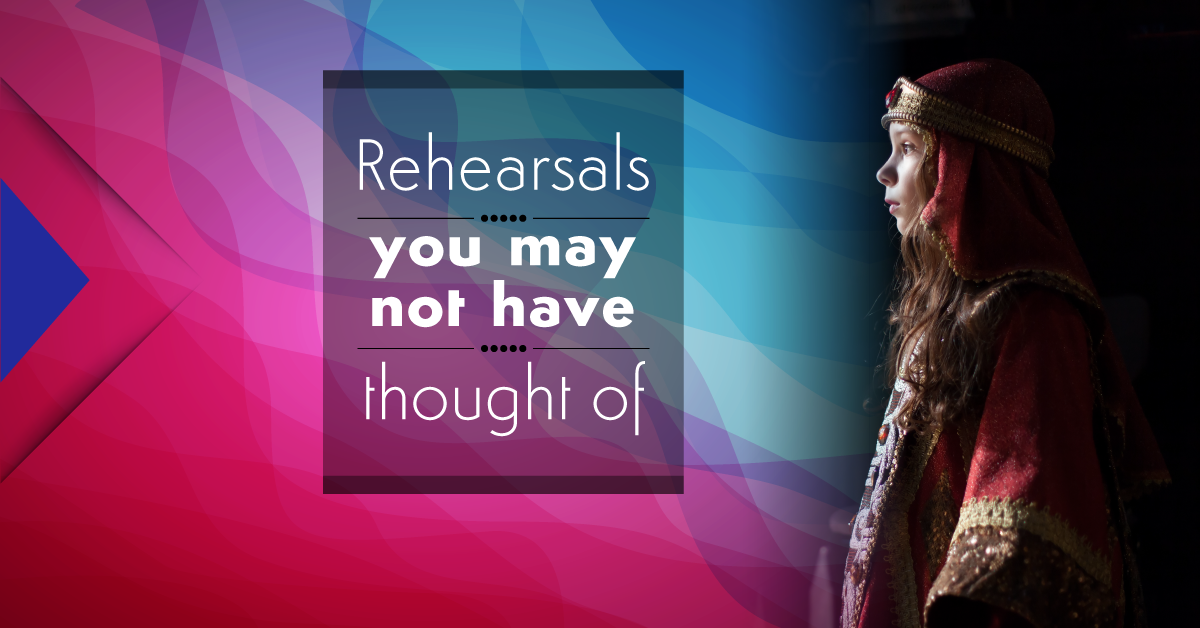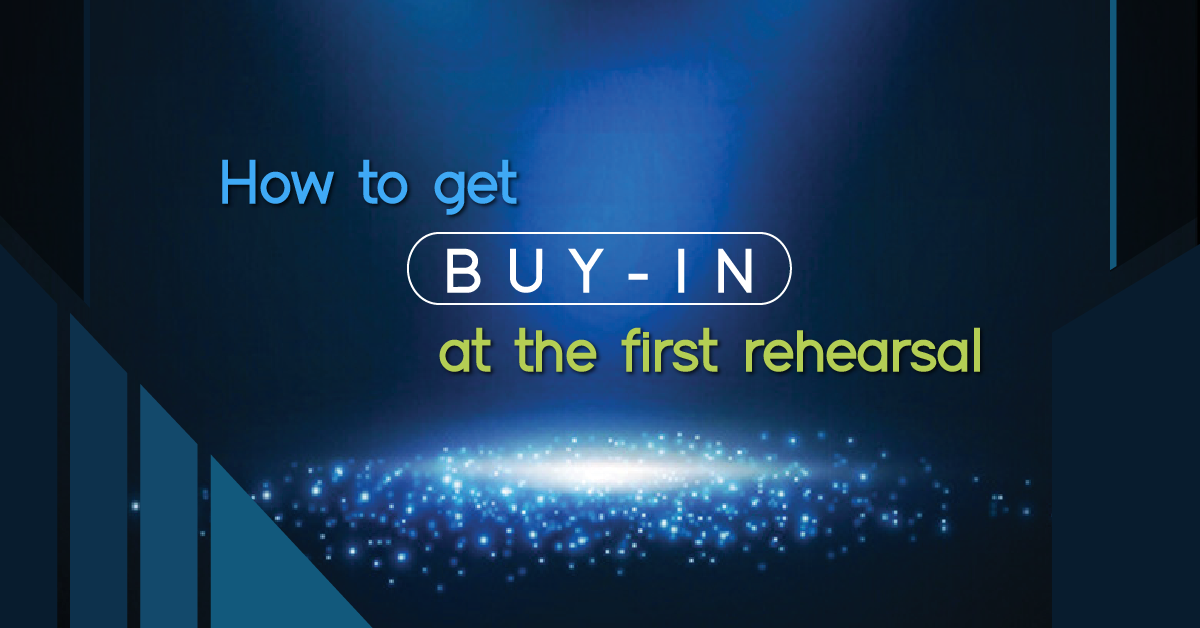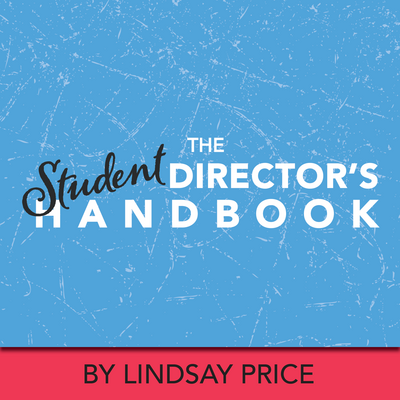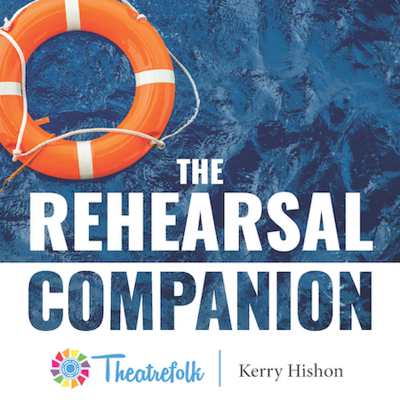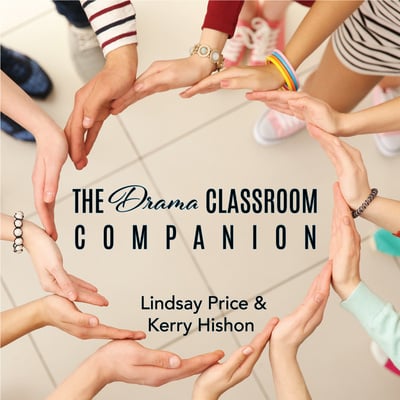The Rehearsal Mid-way Blues: Feeling Stuck? Go Back to the Basics
If you were to make a graph of emotions throughout a rehearsal process of a show, I think it would take on a U-shape. The process starts on a high note, with everyone excited about the show and learning tons of new material. Then it starts to dip down into a valley once the “newness” wears off, and the hard work of the rehearsal process sets in–practicing, reviewing, repeating, doing everything “one more time” (which is never just “one more time”). The excitement comes back with the addition of all the “extras” that make a show better–props, costumes, sound and music, sets, lighting, special effects–and then peaks with a fabulous show.
If you and your students are at that mid-way dip in the valley and rehearsals are feeling forced rather than fun, it can be hard to mix things up to get yourselves out of the rut you’re in. Don’t stress though–try going back to the basics.
Sometimes we forget that theatre is, at its simplest, a form of telling stories. Through movement, songs, speeches, gestures, facial expressions, and humour, we create an experience for our audiences. It’s easy to get caught up in the spectacle and forget the rudimentary storytelling aspects of theatre.
So when you’re feeling stuck, go through the checklist below and see how you measure up for each basic idea. Or go over this checklist with a friend and help each other out. You can use the reflection below to help you solidify your thoughts about where you’re at and how you’re feeling about the rehearsal process.
The Basics of Theatrical Performance
1. Volume – Are you speaking loudly enough to be heard? If you can’t be heard, the audience won’t know what’s going on.
2. Diction and Enunciation – Are your words clear? Is every word distinct? Are you pausing for punctuation?
3. Pacing – Are you rushing through your lines? Taking too many dramatic pauses? Or (as Goldilocks says) are you “just right?”
4. Posture – Are you slumped over or slouching? Are you supporting your diaphragm? Is your posture an active choice or are you being lazy?
5. Focus – Are you actively engaged in the scene, or waiting around until your next line? Who is speaking, and are you listening to them? Where are you looking? Who or what should you be looking at?
6. Facial Expression – This ties in with focus. Are you making an active choice in facial expressions, or are you “dead faced?” Or, are you going over the top and simply pulling faces, rather than making a more natural choice?
7. Body Details – Are you aware of your body at all times? For example, are you extending your fingertips, pointing your toes, and fully raising your arms in your dances? Are you turning the correct way? What is your face doing?
8. Your “what” – First and foremost, do you solidly know your lines? If not, get them memorized! Then, when you say your lines, do you truly understand what you’re saying? What about song lyrics? If you have questions about what you’re saying, the audience won’t know what you’re saying either. Ask questions. Ensure you understand exactly what is going on.
9. Your “why” – Or your motivation. Why is your character there? What is their purpose in the scene? Why are they important to the story?
10. Storytelling – Everything seen or done onstage must contribute to the story. Every actor, no matter their role, is a piece of that puzzle, a crucial gear in that machine, that all adds up to the whole point of the show–to tell a story. Are your choices adding to that story, or taking away from it?
Related Articles
The Student Director's Handbook
by Lindsay Price
Help students take their show from first audition to opening night with The Student Director’s Handbook. This easy-to-use ebook is full of guidelines, tips and templates designed to help students create a vision, circumvent problems and organize rehearsals on their way to a successful production.
The Rehearsal Companion
by Kerry Hishon
You’ve chosen the play, paid the royalties, done the script analysis, held your auditions, and cast the show. Tomorrow is the first rehearsal. Are you ready? Really ready? The Rehearsal Companion can help!
The Drama Classroom Companion
by Lindsay Price & Kerry Hishon
The Drama Classroom Companion is filled with articles and exercises to build the skills needed for theatrical performance as well as real world skills like creative thinking, critical thinking, collaboration, and communication.

